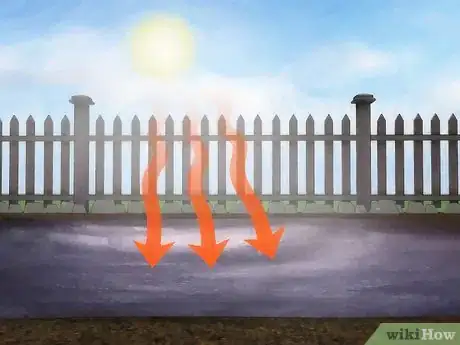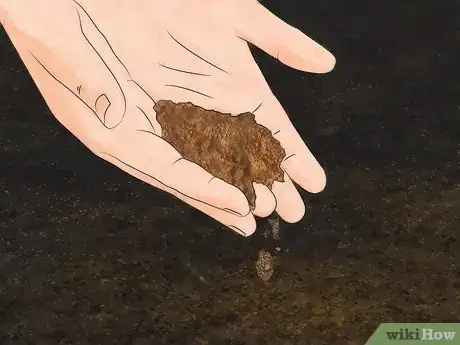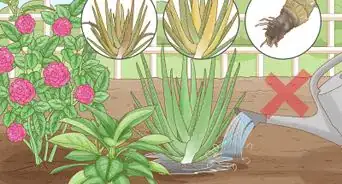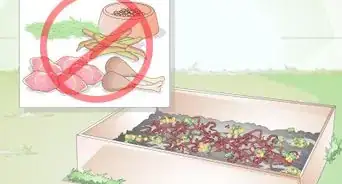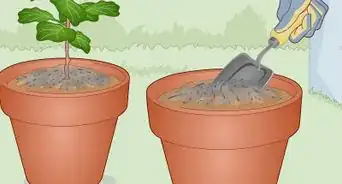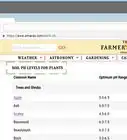X
wikiHow is a “wiki,” similar to Wikipedia, which means that many of our articles are co-written by multiple authors. To create this article, volunteer authors worked to edit and improve it over time.
This article has been viewed 94,102 times.
Learn more...
Growing your own tomatoes will yield fresh, healthy fruit that is available when you need it. Tomatoes require gardening soil that is full of nutrients so not all soil will be good for growing them. Here are some tips on how to prepare garden soil for tomatoes.
Steps
-
1Warm the soil.[1]
- The first step to prepping garden soil for tomatoes is to warm up the soil. Tomatoes grow well in warm soil. Once the temperature of the air starts to rise, it will still take the dirt a while to warm. You can help the warming process along by covering your soil with black plastic to help absorb the sun's heat. Secure the plastic using rocks, bricks or anything else that is heavy and sturdy.
-
2Test the soil's pH level.[2]
- You can purchase a soil test kit at any garden store. Test your soil according to the test directions. The lower the number you get, the more acidic your soil is, with 7.0 being neutral. Tomatoes will grow best in soil that is just slightly acidic with a pH level at about 6.0 to 7.0. You can adjust your soil's pH if needed. If it is too high, mix some sulfur into the soil. If the pH is too low, add lime to the soil.
Advertisement -
3Evaluate the nutrients in the soil.
- The test should also tell you the nutrient and chemical makeup of the soil. Your soil should have a good balance of nitrogen, potassium and phosphorus to yield good tomatoes.
- Nitrogen will help your tomatoes grow healthy leaves. Tomatoes with yellowed leaves may have a nitrogen deficiency. If your soil is lacking nitrogen, you can add more with fertilizer. Organic sources of nitrogen include: alfalfa meal, compost, fish meal, feather meal and leaf mold. Some inorganic sources are: ammonium sulfate, anhydrous ammonia, calcium nitrate and sodium nitrate.[3]
- Potassium aids in disease resistance and helps the tomatoes grow. A deficiency in potassium may result in slower growth and weakened plants.[4] If your soil needs potassium, you can use wood ash, granite dust, rock sand or potassium sulfate to boost the potassium level.
- Phosphorus will help the tomatoes' roots and seed formation. Soil that lacks enough phosphorus can produce tomatoes that have reddened stems and stunted growth.[5] If your test results show that you need more phosphorus, you can add some by adding bone meal, compost, super phosphate or rock phosphate to your soil.
-
4Add compost.
- Compost is a great way to improve gardening soil. It helps to improve the structure, cultivability and nutrition retention. It also attracts earthworms and increase microbes. Compost is made up of broken down organic matter. You can purchase some in a gardening store or you can make your own using yard clippings, leaves and fruit and vegetable wastes.
Advertisement
Community Q&A
-
QuestionWould my tomatoes benefit from muscle shells in the soil?
 Community AnswerYes, in the long-term they will provide nutrients. Crush the shells to the size of a grain of rice and they will provide both nutrients and structure to your soil.
Community AnswerYes, in the long-term they will provide nutrients. Crush the shells to the size of a grain of rice and they will provide both nutrients and structure to your soil. -
QuestionWhat can I use to change soil's pH from 7.5 to 6.0?
 Community AnswerLemon juice or citric acid, both are organic, then measure with reliable pH meter until you get desired pH.
Community AnswerLemon juice or citric acid, both are organic, then measure with reliable pH meter until you get desired pH. -
QuestionHow do I improve my soils pH?
 Jeannie MCommunity AnswerAdd lots and lots of organic matter. If you feed the soil, the soil will in turn feed the plants. Check your pH beforehand and if you're looking at soil that's too acidic, try adding compost. If it tests too alkaline, wood ash or gypsum are excellent choices for building the soil organically.
Jeannie MCommunity AnswerAdd lots and lots of organic matter. If you feed the soil, the soil will in turn feed the plants. Check your pH beforehand and if you're looking at soil that's too acidic, try adding compost. If it tests too alkaline, wood ash or gypsum are excellent choices for building the soil organically.
Advertisement
References
- ↑ http://www.tomatodirt.com/preparing-your-soil.html
- ↑ http://www.tomatodirt.com/preparing-your-soil.html
- ↑ http://www.kdcomm.net/~tomato/Tomato/nutri/nitro.html
- ↑ http://www.kdcomm.net/~tomato/Tomato/nutri/k.html
- ↑ http://www.kdcomm.net/~tomato/Tomato/nutri/p.html
- http://www.tomatodirt.com/preparing-your-soil.html
- http://www.gardenguides.com/74721-prepare-garden-soil-tomatoes.html
About This Article
Advertisement
